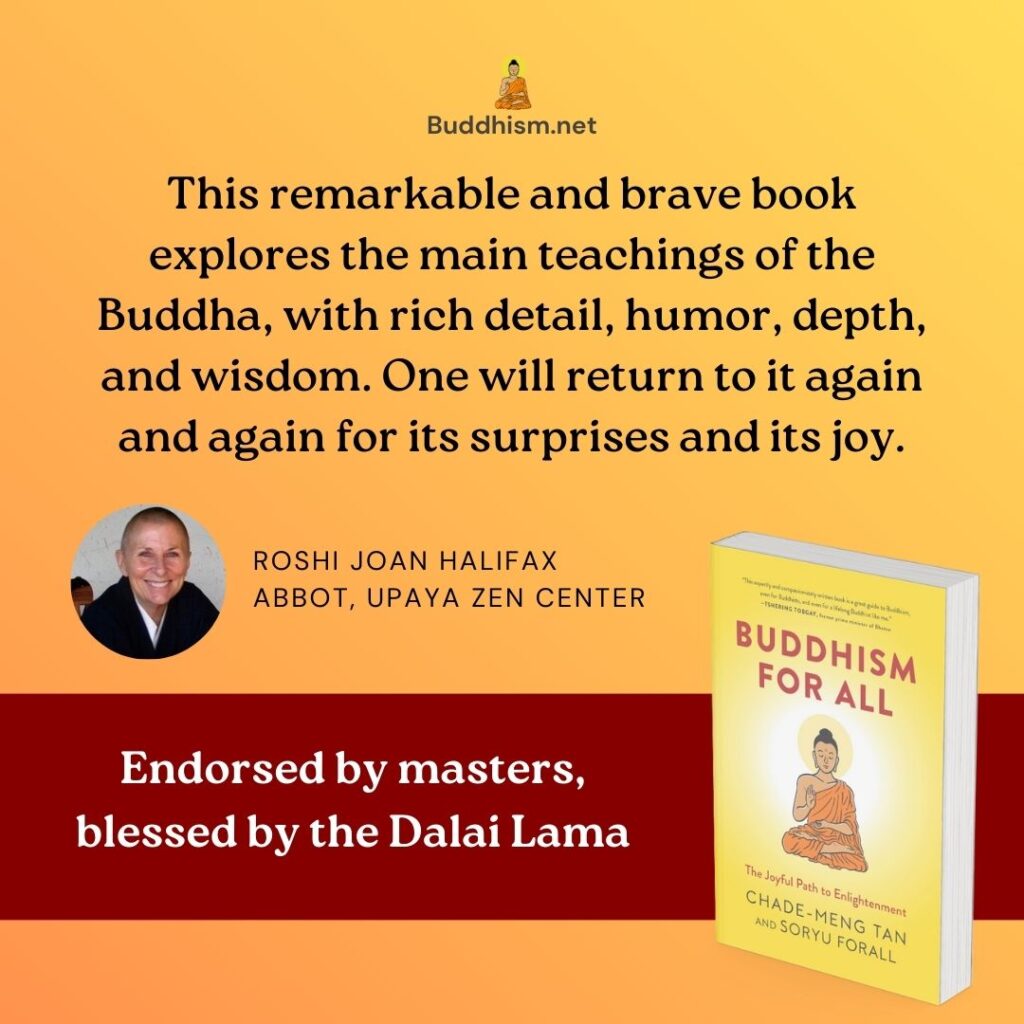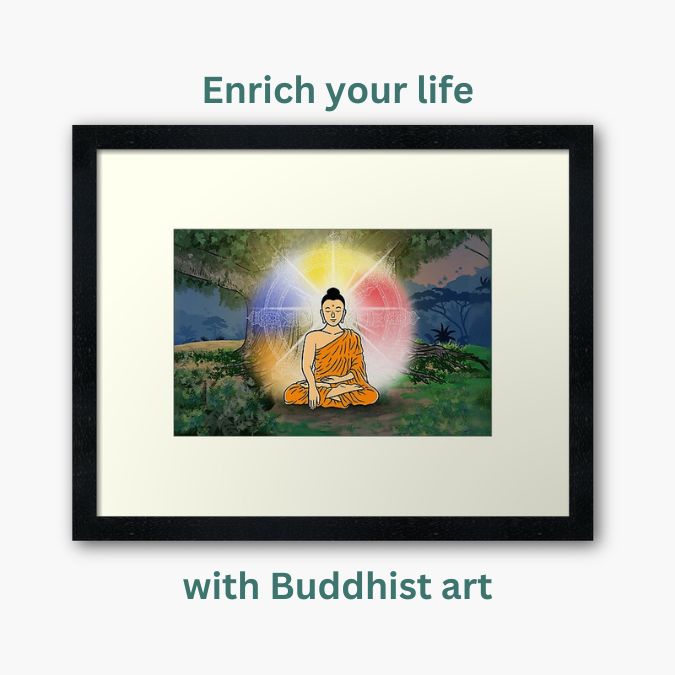
I once walked into a beach house with a stunning panoramic view of the ocean, and I made a joke, “This house is very Buddhist: it possesses right view.” Jokes aside, right view is far more important to the Buddhist path than first meets the eye (yes, pun intended, and you should have seen it coming).
There is a very nice symbol of Buddhism as a wheel with eight spokes representing the Noble Eightfold Path. One thing I like about this symbol is that it alludes to the importance of all eight spokes. The wheel only turns properly with all of them. If one of those cost-cutting corporate executives try to cut off one of the spokes and its corresponding one-eighth of the wheel “to realize 12.5% in cost savings”, it’s not going to work. As the wheel turns, all eight parts of the Noble Eightfold Path contribute to your journey towards full enlightenment.
Another thing I like about the symbol is, for the wheel to make a complete turn, it ends where it begins. Completeness is where beginning and end meet, and the place where it both begins and ends is right view. In an earlier post, the Buddha defines right view as understanding the Four Noble Truths. With this definition, you start your journey with an approximate understanding of the Four Noble Truths, which guides you along your way, and you arrive with a complete understanding of the Four Noble Truths.
In the Discourse of the Great Forty [1] (which we just came across in a recent post), the Buddha offers a complementary alternative definition of right view. Here, he identifies two types of right view: mundane right view and transcendent right view. Mundane right view is what you start your journey with, and transcendent right view is what you end the journey with. The Buddha defines mundane right view as:
There is what is given and what is offered and what is sacrificed; there is fruit and result of good and bad actions; there is this world and the other world; there is mother and father; there are beings who are reborn spontaneously; there are in the world good and virtuous recluses and brahmins who have realized for themselves by direct knowledge and declare this world and the other world.
This definition says three things:
- Actions have consequences, especially ethical ones, including across lifetimes.
- There is still a mundane world, so do not use Buddhism to deny the mundane world even as you work towards transcending it.
- There is a path, and there are wise and virtuous teachers you can learn from.
These three insights have a profound impact on your practice. The first point is a statement on empowerment. It says that everything you do has a direct consequence on your eventual enlightenment. Every thought of generosity, every act of compassion, every word of kindness, every decision to let go, every intention to do the right thing, every second of meditation practice, every moment of samadhi and mindfulness, they all have consequences. Not a single thing you think, say or do is inconsequential. That is your power. Recognize your power. Realizing enlightenment is well within your power.
The second point reinforces the first point with a special emphasis on responsibility. There is a world you live in. There are suffering beings populating all corners of samsara. Even as you progress towards full enlightenment and begin to transcend this world, remember there is still mother and father and other sentient beings, and you have responsibility towards them.[2] This sense of responsibility usually shows up most vividly in your practice of kindness, compassion and virtue, but it also permeates your entire practice.
The third point reminds us that we are all very fortunate because we have a path, and there exist wise teachers in the world who can guide us. Learn from them. Walk the path.
Understanding these points can make a huge difference in your progress along the path. That is why mundane right view is so important for the practitioner. In this same discourse, the Buddha emphasizes that right view leads each and every one of the other components of the Noble Eightfold Path.
Soryu has taught many students and he observed that the degree to which a student understands mundane right view consistently predicts the degree of their success on the path. Soryu keeps saying he does not know how to emphasize strongly enough the importance of mundane right view. I do not know either, but I do know how to make a joke about a beach house being Buddhist for possessing right view, and I hope that every time you remember that joke, you remember the profound importance of mundane right view.
Eventually, the student reaches full enlightenment and gains transcendent right view, which the Buddha describes as “right view that is noble, taintless, supramundane”. It is, he says, the completion of investigation, the perfection of wisdom, and the full understanding of the Four Noble Truths.
Activities
- Reflect on this post with Angela:
- Buddhism is wonderful as it allows us to start practicing right here where we are. We do not have to uproot ourselves to start practicing. As we progress on the path and discover the joys of stillness and samadhi, our compassion to help all sentient beings be awakened keeps us grounded and continually engaged in society.
- What insights, learning, or reflection came up for you from this article?
References
[1] Majjhima Nikāya 117.
[2] In Sutta Nipata 2.4, the Buddha says that to support one’s parents is one of the greatest blessings.
Featured image by Colin Goh.


